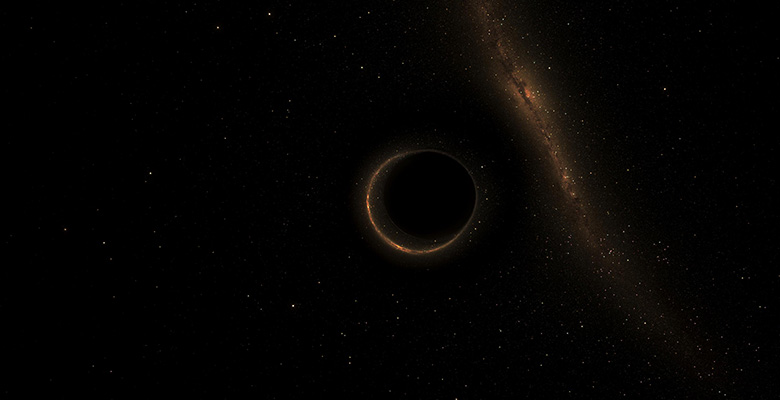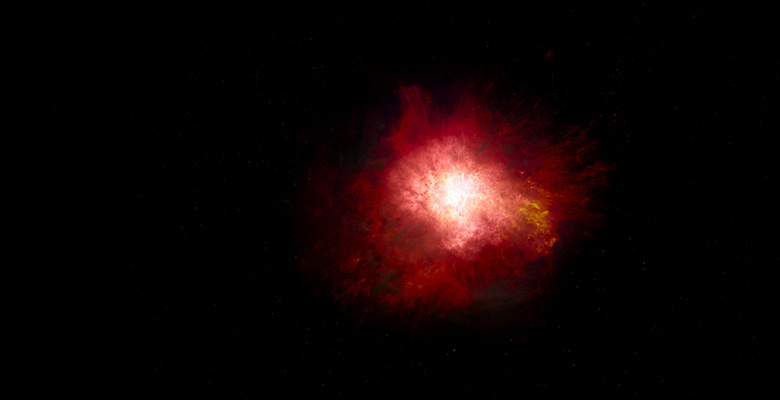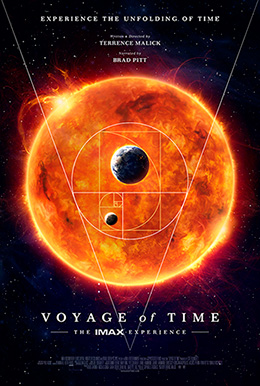University astrophysicist 'starring' role in Terrence Malick Hollywood movie

Hollywood writer-director Terrence Malick has enlisted the expertise of a Liverpool John Moores University astrophysicist for his new film, Voyage of Time.
Released this Friday, the documentary film charts the history of the Universe and features stunning animated sequences of cosmic phenomena created by Dr. Rob Crain, of LJMU’s Astrophysics Research Institute (ARI).
Dr Crain, a Royal Society University Research Fellow (URF), was invited to act as a scientific consultant for the movie, after visionary director Terrence Malick saw images of Rob’s galaxy simulations featured in a Scientific American magazine article.
Dr.Crain commented: “Collaborating with a legendary director on a high-profile feature film is tremendously exciting, and naturally we jumped at the opportunity.
“The film showcases the world-leading astrophysics research we’re pursuing here at LJMU to a global audience of cinema-goers. Hopefully it will encourage younger people to take a closer look at the natural world, ask deeper questions of our Universe and inspire younger viewers to consider the exciting opportunities that are presented by a career in the sciences.”
There will be two versions of the film released to coincide with World Space Week – an IMAX feature narrated by Hollywood actor, Brad Pitt, and a feature-length movie narrated by Academy-Award winning actress Cate Blanchett. Speaking about the film, Brad Pitt described it as an “incredibly beautiful and a unique experimental IMAX film for children and families chronicling the birth of time.”

Supernova | The vibrant beginnings of a supernova explosion at the end of a star's life—as seen in the new IMAX® film Voyage of Time
Crain collaborated with Dr. Jim Geach, also a Royal Society URF from the University of Hertfordshire, to create visualisations of supercomputer simulations of the cosmos, which are shown in the film and its trailer. These sequences depict huge cosmic events such as the formation of a galaxy, the explosion of a star in a supernova and the coalescence of a colossal structure called a galaxy cluster.
Crain added: “It’s gratifying that the outcome of years of scientific research and software development, and the many millions of calculations performed by our computers, can be portrayed on the silver screen so beautifully. Galaxies are amongst Nature’s most majestic structures, and the dramatic story of their formation, assembly and evolution looks sensational in Voyage of Time.”
 A number of the visualisations were created using the ARI’s high performance computing (HPC) facility, and focus on galaxies formed in simulations from the EAGLE project, which won Research Project of the Year for LJMU at the 2016 Educate North Awards. The project was also recently shortlisted for the same prize by the Times Higher Education Awards, with the winner to be announced in November.
A number of the visualisations were created using the ARI’s high performance computing (HPC) facility, and focus on galaxies formed in simulations from the EAGLE project, which won Research Project of the Year for LJMU at the 2016 Educate North Awards. The project was also recently shortlisted for the same prize by the Times Higher Education Awards, with the winner to be announced in November.
Due to the complex nature of the animation and rendering process, it took approximately a year to complete the project for the film. For each sequence an individual frame could take up to 30 minutes to render and there are around 1,000 frames in each of the animations.
Dr Jim Geach, from the University of Hertfordshire added: “The film tells the most remarkable of all stories – the evolution of the cosmos and the development of life – in an awe-inspiring way.
“What this movie demonstrates is that complex scientific ideas and concepts can be presented in a beautiful way, and the gulf between the artistic and scientific communities is not as wide as you might think.”
The pair, who are the only UK-based scientists to work on the visuals of the project, have also provided voiceovers for educational films that will be released online to accompany the theatrical release which they hope will foster a new generation of budding scientists.


